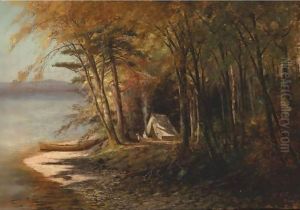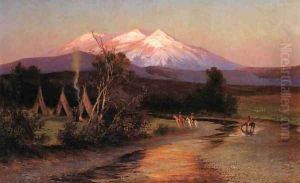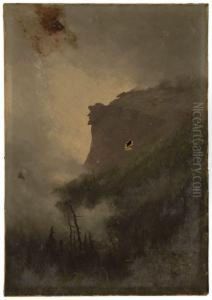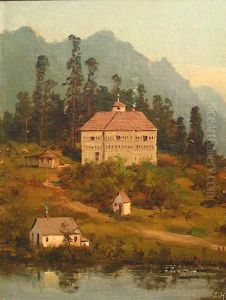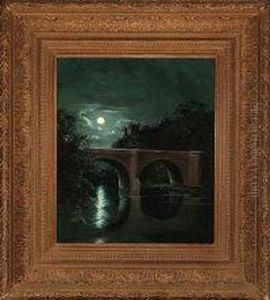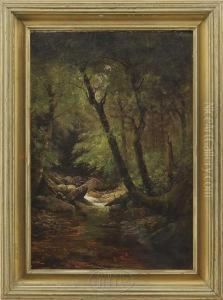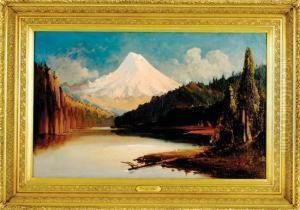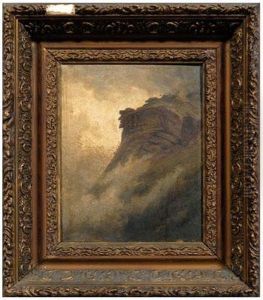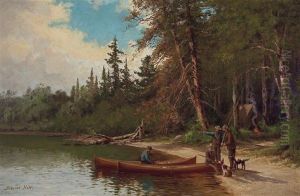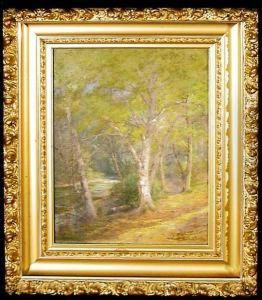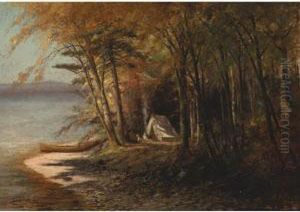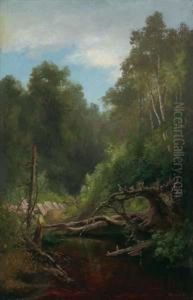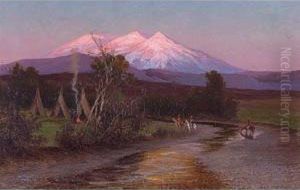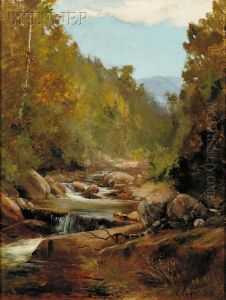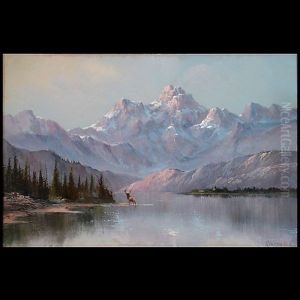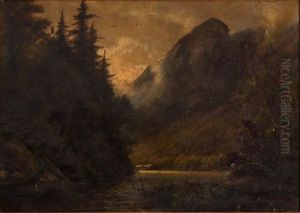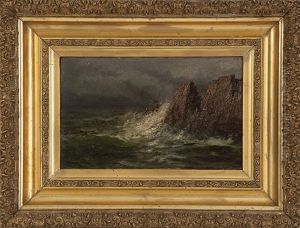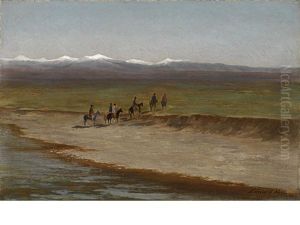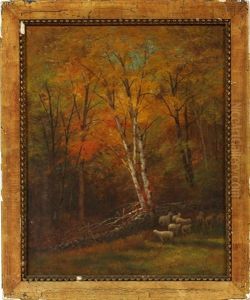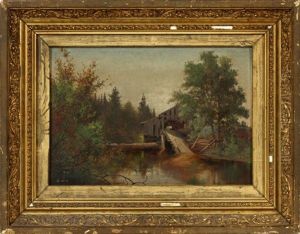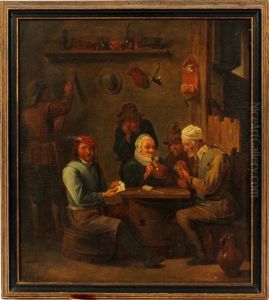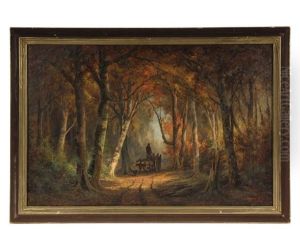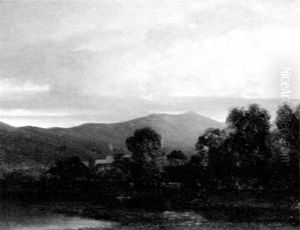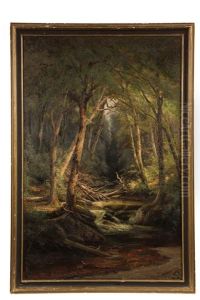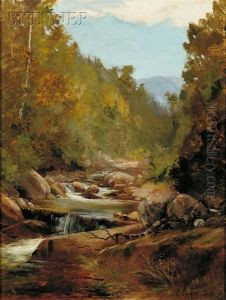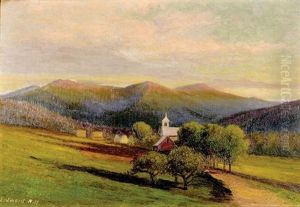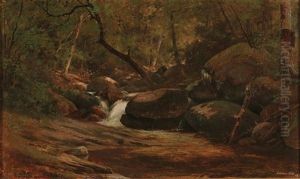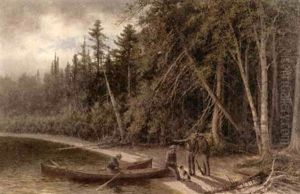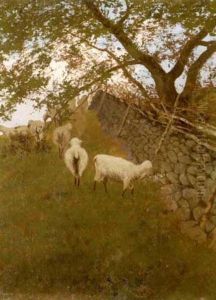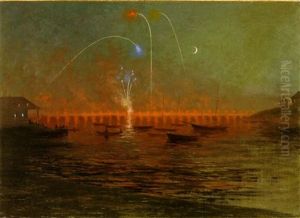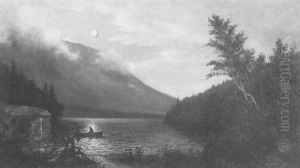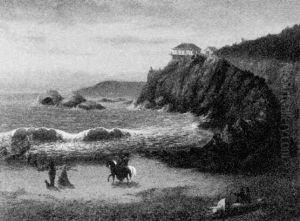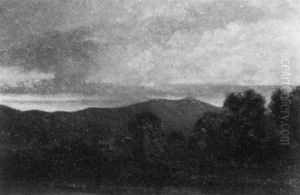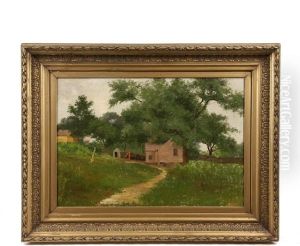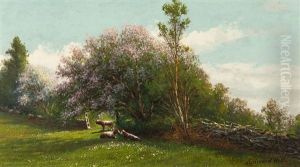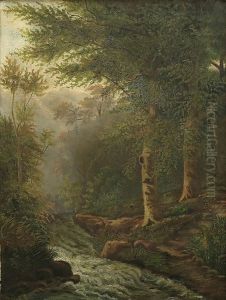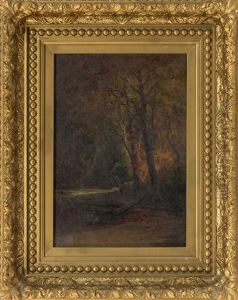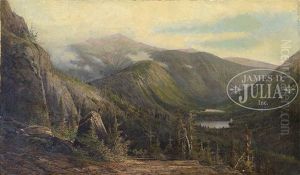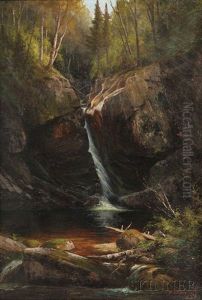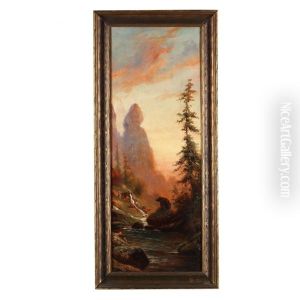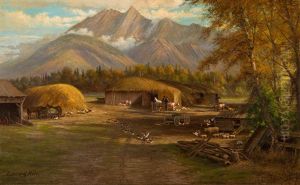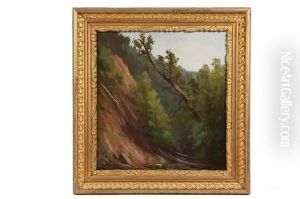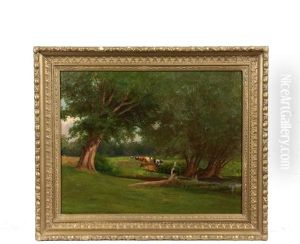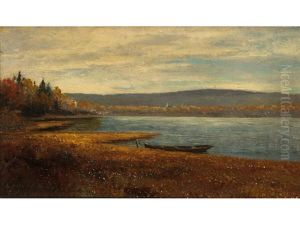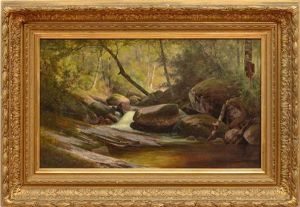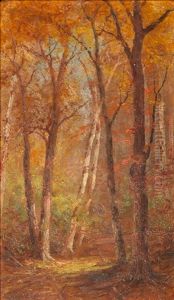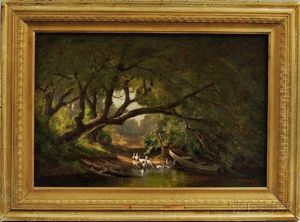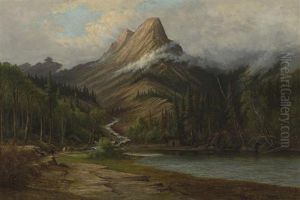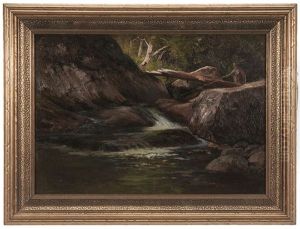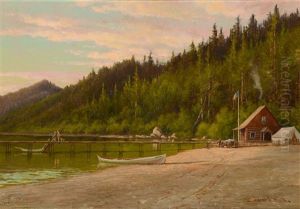Edward Hill Paintings
Edward Hill was an American artist known for his landscape paintings. Born on December 9, 1843, in England, Hill immigrated to the United States with his family when he was a child. The family settled in Taunton, Massachusetts, where Hill grew up. He developed an interest in art at an early age, but his initial career path led him to work in various trades, including as a machinist and a draftsman.
Hill's passion for art, however, remained undeterred. He began to pursue painting seriously in the 1860s, studying briefly with established artists and teaching himself through practice. In 1864, Hill moved to Boston, where he became part of the city's burgeoning art scene. He continued to develop his skills, focusing on landscape painting, which would become his primary genre.
In the 1870s, Edward Hill embarked on a series of travels that would have a profound impact on his work. He visited the White Mountains of New Hampshire, a region that would become a central theme in his oeuvre. Captivated by the rugged beauty of the landscape, Hill painted numerous scenes of the White Mountains, contributing to the popularization of the area as a subject for American artists. The mountains' majestic vistas and the ever-changing play of light upon them became hallmarks of his work.
Throughout his career, Hill exhibited his paintings in various venues, including the Boston Art Club and the Pennsylvania Academy of the Fine Arts. His work was well-received, earning him recognition and awards. Despite his success, Hill remained modest about his accomplishments, focusing instead on the intrinsic rewards of creating art.
Edward Hill's later years were spent in New Hampshire, where he continued to paint the landscapes he loved until his death on February 10, 1923. Today, his work is considered an important part of the American landscape painting tradition, especially his contributions to the visual legacy of the White Mountains. Hill's paintings are held in several museums and private collections, where they continue to be appreciated for their beauty and historical value.
